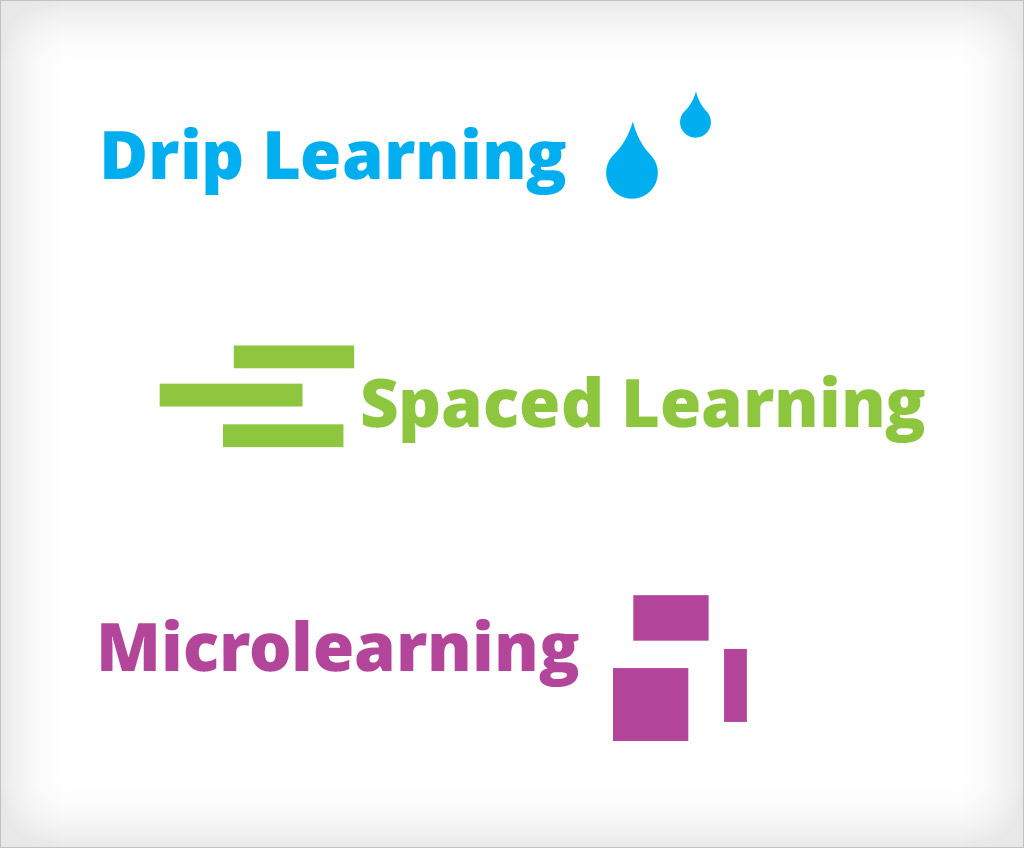If you’re an instructional designer, you’re probably well aware that the key challenge isn’t just getting information into learners’ heads—it’s keeping it there. Think back to the last time you learned something valuable, especially a difficult concept, skill, or process. Maybe it was a workout routine, how to change the oil in your car, or introducing yourself in a foreign language. Think about how long it took you to get comfortable with these activities. The same goes with your organization’s processes and procedures. In order for your learners to retain the information being presented they’ll need to exercise new concepts and practice relevant skills over time, a one-and-done approach won’t be successful. This is why we say learning is a journey, not a one-time event. That’s where a smart blend of drip learning, spaced learning, and microlearning can really make a difference in enhancing retention, engagement, and applied knowledge.
With drip learning, we spread the learning material over time, giving small bites of information rather than a one-time, full-course meal. This approach keeps learners engaged without overwhelming them, making it easier to absorb and retain new information. Ideally, we also apply a constructivist approach to this strategy to build on prior knowledge and strengthen foundational skills, with each “drip” referencing back and incorporating learning from previous drips. Using multiple content-appropriate modalities (video, audio, animation, eLearning, quizzes, interactions, simulations, games, AR/VR) for your drips also increases engagement and retention.
Spaced learning is another great tool in the instructional design toolbox. It involves circling back to previously covered material at spaced intervals. The timing is crucial here; just as learners are about to forget something, they review it, reinforcing the memory, strengthening neural pathways, enhancing recall and applied skills. It’s like going to the gym but for your brain—you’ve got to regularly exercise to build strength and let form become second nature. Working out for 3 hours once a week won’t be as effective as 3 hours spread throughout the week. Learning works the same way.
Then there’s microlearning — this is your go-to for breaking down complex topics. Since the rise of the internet age and social media, this has become the modern-day preferred method for content consumption. Microlearning segments are ideally 30 seconds to 3 minutes long, focus on a single objective, and are ideally quick and easy to find and complete. Microlearning is a fantastic “just-in-time” learning strategy as well – just determine when/where/how your audience is completing the task, then identify ways to make the microlearning content accessible during that process. Determine how to segment your microlearning content by breaking the topic down to its most basic components, as simply as you can. Sometimes microlearning isn’t even a subtask, maybe it’s a sub-sub-sub-task. That’s your “Minimum Acceptable Chunk” (credit goes to Kevin Alster for the term “MAC”).
These strategies really shine when they are used in conjunction with each other. Drip learning describes the strategy of using small refreshers, or microlearning, to reinforce knowledge over defined, spaced learning intervals. Together, they facilitate learning in a natural way that works with the way our brains work. We recognize learning is an ongoing journey, not a one-time event. This helps make sure your training content isn’t just consumed, but is actually stuck in learners’ heads for the long haul.
By mixing these methods into your instructional design, you’re not just ticking boxes—you’re creating a more effective, engaging, and memorable learning experience.

